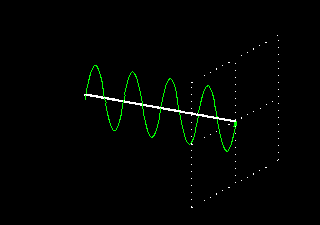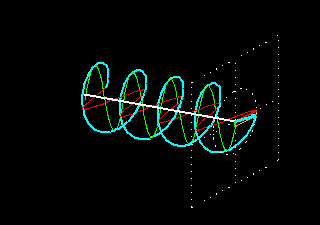Radio Frequency Identification (RFID) technology is widely used in various industries and consumer applications. It helps manage inventory, track assets, and enhance security. RFID systems rely on antennas in both readers and tags. There are two primary types of RFID antennas: linear polarized and circular polarized antennas. This article explores the differences between these two types of antennas, including their design, performance, and applications. It aims to assist users and designers in making informed decisions about which antenna to choose.
What is RFID?
RFID stands for Radio Frequency Identification. It is a technology that uses radio waves to automatically identify and track objects or people. RFID tags, which contain a microchip and an antenna, are attached to or embedded in the objects or people being tracked. These tags emit radio signals that are detected by RFID readers, which then transmit the information to a computer system for processing. RFID is commonly used in various applications such as inventory management, access control, payment systems, and tracking of goods or assets.

What is a Linear polarized RFID Antenna?
A linear polarized RFID antenna is an antenna designed to transmit and receive radio frequency signals in a specific polarization direction. Linear polarization means that the electric field of the radio waves oscillates in a single plane. In the case of RFID antennas, linear polarization is typically either vertical or horizontal.

Linear polarized RFID antennas are commonly used in RFID systems because they provide better read range and reliability compared to circular polarized antennas. They are especially effective in applications where the orientation of the RFID tags is known and consistent, such as in item-level tagging or conveyor belt tracking.
What are the advantages of Linear Polarity RFID Antennas?
There are several advantages of linear polarity RFID antennas:

1. Improved Read Range: Linear polarity antennas offer a longer read range compared to circular polarity antennas. This is because linear antennas can transmit and receive signals in a specific direction, allowing for a more focused and efficient communication.

2. Enhanced Tag Detection: Linear polarity antennas provide better tag detection and accuracy. They can discriminate between tags more effectively, reducing false positives and improving overall read rates.
3. Reduced Interference: Linear antennas can help reduce interference from nearby metallic or reflective surfaces. They are less affected by multipath reflections, which can cause signal distortion and degradation.
4. Better Performance in Dense Environments: In environments with a high density of RFID tags, linear polarity antennas can handle the increased tag density more effectively. They can read tags in a more organized and controlled manner, minimizing collisions and improving overall system performance.
5. Compatibility with Specific Applications: Certain RFID applications, such as item-level tracking in retail or inventory management in warehouses, may require linear polarity antennas to achieve the desired performance. Linear antennas are well-suited for these applications due to their improved read range and tag detection capabilities.
6. Lower Cost: Linear polarity antennas are generally less expensive than circular polarity antennas. This makes them a cost-effective choice for many RFID applications, especially those that do not require the advanced features provided by circular antennas.
What are the disadvantages of Linear Polarity RFID Antennas?
There are several disadvantages of linear polarity RFID antennas:
1. Reduced tag sensitivity: Linear polarity antennas have reduced sensitivity to tags that are not aligned with their orientation. If the tag is not perfectly aligned with the antenna, the read range and reliability of the system can be significantly reduced.
2. Orientation sensitivity: Linear polarity antennas are highly sensitive to the orientation of the tag. If the tag is not aligned with the antenna’s orientation, the read range and reliability can be affected. This makes it difficult to read tags that are randomly oriented or not consistently positioned.
3. Limited coverage area: Due to their narrow beamwidth, linear polarity antennas have a limited coverage area. This means that they may not be able to read tags that are located outside their coverage area or in areas with weak signal strength.
4. Interference from metallic and conductive surfaces: Linear polarity antennas are more susceptible to interference from metallic and conductive surfaces. These surfaces can reflect or absorb the radio waves, leading to reduced read range and reliability.
5. Complex tag orientation: Linear polarity antennas may struggle to read tags that have complex orientations, such as tags attached to metal objects or tags that are folded or bent. The orientation of the tag can significantly affect the read range and reliability of the system.
What is a Circular Polarized RFID Antenna?
A circular polarized RFID antenna is an antenna designed to emit and receive radio frequency signals in a circular polarization pattern. This type of antenna is commonly used in radio frequency identification (RFID) systems, where it is used to communicate with RFID tags.
Circular polarization means that the electromagnetic waves emitted by the antenna rotate in a circular motion as they propagate through space. This is in contrast to linear polarization, where the waves propagate in a straight line. Circular polarization offers several advantages in RFID applications, such as better signal reception in multiple orientations, reduced signal loss due to tag orientation, and improved read range.

Circular polarized RFID antennas are typically designed with a specific frequency range in mind, such as UHF (ultra-high frequency) or microwave frequencies. They can be either passive or active, with passive antennas relying on the energy from the RFID reader to power the antenna, while active antennas have their own power source.
Overall, circular polarized RFID antennas play a crucial role in enabling efficient and reliable communication between RFID readers and tags in various applications, including inventory management, access control, asset tracking, and more.
What are the advantages of Circular Polarized RFID Antenna?

1. Superior read reliability: Circular polarized antennas reduce the effects of multipath interference, which can occur when the RFID signal reflects off nearby objects and causes signal distortion. This improves the reliability of reading tags accurately and consistently.
2. Flexibility in tag orientation: Circular polarized antennas can read tags regardless of their orientation. This means that the tags can be placed in any direction or orientation without affecting the reading performance. This flexibility makes circular polarized antennas suitable for applications where tags are randomly oriented or moving.

3. Increased read zone coverage: Circular polarized antennas provide a wider read zone coverage compared to linear polarized antennas. This is particularly useful in applications where multiple tags need to be read simultaneously or where a large area needs to be covered.

4. Reduced impact of tag orientation: With circular polarized antennas, the orientation of the RFID tag has less impact on the read performance. This means that even if the tag is not perfectly aligned with the antenna, it can still be read with high accuracy and reliability.
5. Better performance in dynamic environments: Circular polarized antennas are more tolerant to changes in the environment, such as tag movement or varying orientations. This makes them suitable for applications where tags are constantly moving or where the environment is subject to changes.
6. Increased read rate: Circular polarized antennas can read tags at a faster rate compared to linear polarized antennas. This is beneficial in applications that require high-speed tag reading, such as inventory management or asset tracking.
What are the disadvantages of Circular Polarized RFID Antenna?
Some of the disadvantages of circular polarized RFID antennas include:
1. Complexity: Circular polarized antennas are more complicated to design and build than linear polarized antennas. This complexity can make them harder to design and manufacture in large quantities. The axial ratio is an important characteristic for circular polarization RFID antennas. It must be taken into account and tested during the HFSS simulation and prototype testing and production.


2. Limited read range: Circular polarized antennas generally have a shorter read range compared to linear polarized antennas. This means that they may not be suitable for applications where long-range reading is required.
3. Cost: Circular polarized antennas tend to be more expensive than linear polarized antennas. This can make them less cost-effective for certain applications, especially when large quantities of antennas are needed.
What is the difference between designing a linear polarized and circular polarized RFID antenna ?
The main difference between designing a linear polarized and circular polarized RFID antenna lies in the polarization of the electromagnetic waves emitted and received by the antenna.
1. Linear Polarized RFID Antenna:
– The electromagnetic waves emitted and received by a linear polarized RFID antenna are polarized in a single plane.

– The antenna is designed to radiate and receive energy predominantly in a specific direction, aligned with the polarization plane.
– The orientation of the antenna needs to be aligned with the orientation of the tag for efficient energy transfer.
– Linear polarized antennas are simpler to design and manufacture compared to circular polarized antennas.
2. Circular Polarized RFID Antenna:
– The electromagnetic waves emitted and received by a circular polarized RFID antenna are polarized in a circular motion.

– The antenna radiates and receives energy in multiple directions, irrespective of the orientation of the tag.
– The orientation of the antenna does not need to be aligned with the orientation of the tag for efficient energy transfer.
– Circular polarized antennas are more complex to design and manufacture compared to linear polarized antennas.
– The circular polarization allows for better tag readability in various orientations and reduces the chances of signal loss due to tag orientation.
Overall, the choice between a linear polarized and circular polarized RFID antenna depends on the specific application requirements, tag orientation variability, and the desired read range and read reliability.
Selecting the Right Polarized RFID Antenna for Your Application
The decision to use a linear or circular RFID antenna depends on the specific needs of the application. If tags are consistently positioned and long range is important, linear antennas are likely the best option. However, if tag orientation changes and even coverage is necessary, circular antennas may provide better results.
Industry-Specific Applications
Retail: Circular antennas are often used in retail environments for inventory management and theft prevention, where items with tags can be at various angles.
Logistics and Warehousing: Linear antennas are commonly utilized in logistics, particularly in conveyor belts or gateways where packages and containers have standardized orientations.
Event Management and Access Control: Circular antennas help in event management and access control systems, ensuring that RFID badges or wristbands work irrespective of their orientation.
Healthcare: Circular antennas are used in healthcare settings for tracking medical equipment, monitoring patient movements, and managing inventory.
Automotive: Linear antennas are used in automotive manufacturing and assembly lines for tracking and managing parts and components.
Agriculture: Circular antennas are used in the agriculture industry for tracking livestock, monitoring crop growth, and managing inventory.
Hospitality: Circular antennas are used in hotels and resorts for access control, inventory management, and tracking guest movements.
Education: Linear antennas are used in educational institutions for tracking and managing assets such as laptops, tablets, and textbooks.

Manufacturing: Linear antennas are used in manufacturing facilities for tracking and managing products, monitoring production processes, and managing inventory.
Food and Beverage: Circular antennas are used in the food and beverage industry for tracking and managing inventory, ensuring product quality and safety, and monitoring production processes.
Pharmaceuticals: Linear antennas are used in pharmaceutical manufacturing and distribution for tracking and managing products, ensuring regulatory compliance, and monitoring inventory levels.
Construction: Circular antennas are used in the construction industry for tracking and managing tools and equipment, monitoring worker movements, and managing inventory.
Energy and Utilities: Linear antennas are used in the energy and utilities sector for tracking and managing assets such as meters and equipment, monitoring infrastructure, and managing inventory.
Government and Public Sector: Circular antennas are used in government and public sector applications for access control, tracking and managing assets, and monitoring movements of people and vehicles.
Financial Services: Linear antennas are used in financial institutions for access control, tracking and managing assets such as laptops and mobile devices, and monitoring employee movements.
Conclusion
Both linear and circular RFID antennas have their uses in a wide range of RFID applications. The choice between them should be based on understanding their different properties and how these relate to the specific requirements of the application. By carefully considering factors such as tag orientation, read range, and environmental complexity, system designers and end-users can make the most of the strengths of each antenna type to optimize their RFID solutions.


